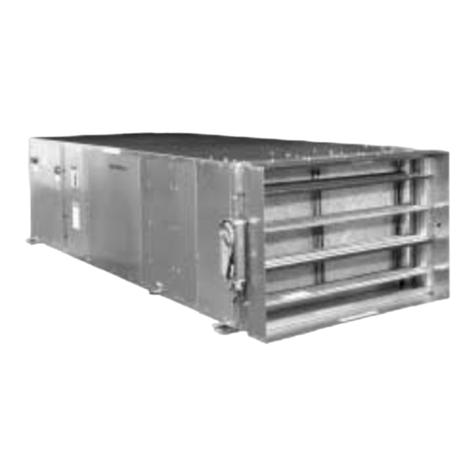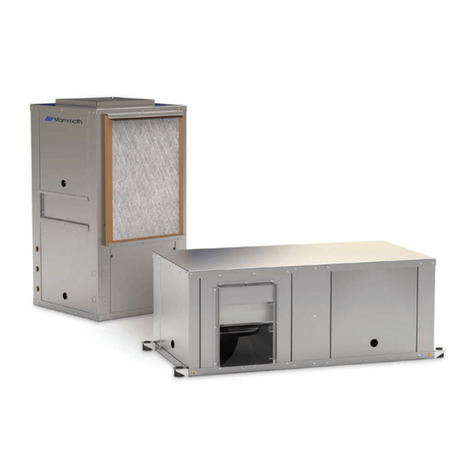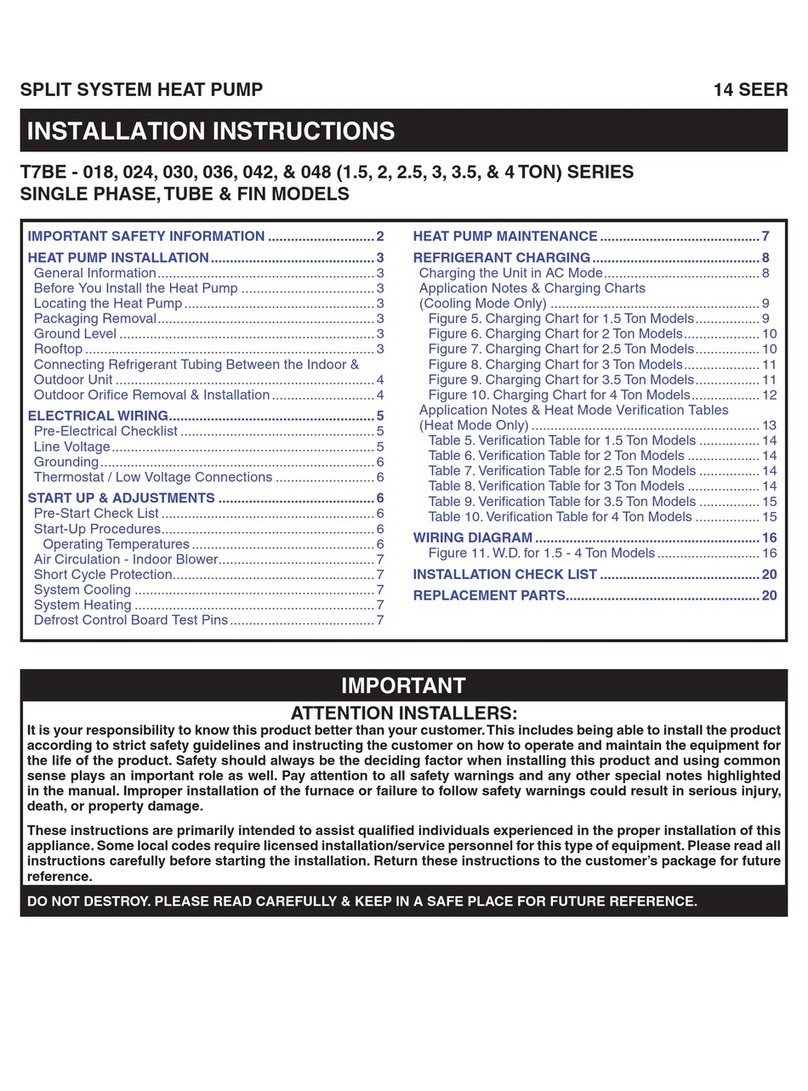Mammoth J036HHC Manual

W
A
T
E
R
S
O U R C E
H
E A
T
P
U
M
P
S
Installation
InstallationInstallation
Installation,
,,,
Operation
OperationOperation
Operation
an
anan
and
ddd
Maintenance
MaintenanceMaintenance
Maintenance
Instructions
InstructionsInstructions
Instructions
Important:
Important:Important:
Important:
These instructions are for the use of specially
trained personnel, experienced in the installation of this
equipment and related systems. Some states require
licensing of installation and service personnel.
Unqualified individuals should not attempt to interpret
these instructions or install this equipment. Read
instructions carefully before unpacking, installing and
operating unit.
Inspection:
Inspection:Inspection:
Inspection:
This heat pump has been factory inspected;
however, we recommend you check the carton and
inspect the unit for concealed shipping damage. Note
any transit damage on all copies of the bill of lading.
Purchasers must file transit damage claims promptly
with the freight company.
Handling:
Handling:Handling:
Handling:
Always move the unit with care and in the
horizontal position as shipped on pallet. Moving the heat
pump on its side or dropping it may damage internal
parts.
Storage
StorageStorage
Storage
: Store in a clean, dry and protected area.
Location:
Location:Location:
Location:
Install units indoors in an area that provides
for maintenance access.

Installation
Definition
DefinitionDefinition
Definition
Single refrigeration circuit, one unit section with fan outlet.
Unit
UnitUnit
Unit
Placement
PlacementPlacement
Placement-
---Horizontal
HorizontalHorizontal
Horizontal
See Figures 1 and 2
Mammoth’s heat pumps must be hung from the ceiling as
shown in Figure 1. Mounting brackets, rubber grommets,
bolts and washers are in place on the unit. The mounting
brackets are designed to accept up to 3/8-inch threaded
rods. A flat washer and two nuts (not supplied by
Mammoth) should be used to mount the unit on the ceiling-
attached threaded rods. When installed, the heat pump
should be slightly pitched toward the condensate drain
connection.
Unit
UnitUnit
Unit
Placement
PlacementPlacement
Placement-
---V
VVV
ertical
erticalertical
ertical
See Figure 3
Mammoth’s heat pumps must be installed on a level
surface. We recommend placing a carpet pad or other
isolating material under the unit to prevent noise from
transmitting to the building structure. If the unit is installed
in a closet adjacent to the conditioned space, provide an
insulated return air duct with at least one 90-degree bend.
If a free return air system is used, position the filter-side of
the unit as close as possible to the return air grille.
Note: The unit is shipped from the factory with access to
the electrical box such that return air enters the unit from
the right side when facing the electric control box.
Model
ModelModel
Model
Number
NumberNumber
Number
Nome
NomeNome
Nomenclature
nclaturenclature
nclature
J
JJJ
036
036036
036
H
HHH
H
HHH
C
CCC
V
VVV
oltage
oltageoltage
oltage
Unit
UnitUnit
Unit
Model number
Model number Model number
Model number
Unit
UnitUnit
Unit
T
TTT
ype
ypeype
ype
T
TTT
emperature
emperatureemperature
emperature
Range
RangeRange
Range
Design
DesignDesign
Design
Series
SeriesSeries
Series
D = 208-230/60/1
E = 265/60/1
F = 208-230/60/3
G = 460/60/3
J = 380/50/3
K = 575/60/3
L = 220/50/1
H =
Horizontal
Unit
V =
Vertical
Unit
H = Standard Range
L = Low Temperatur e
Mammoth concerned about the product quality
and committed to a policy of continuous product
improvements ,Please based on the rating label
and the unit electrical wiring label, and thus
reserves the right to change specifications and
design without notice.

Figure 1: Horizontal mounting detail (L009-J072H)
SEE GROMMET DETAIL
(SEE FIGURE 2)
Figure 2: Grommet detail
Figure 3: Typical vertical installation detail
HANGER RODS
(BY OTHERS)
MAX/MIN
DIVERGE
WATER OUT FPT CONNECTION
(SEE DIMENSIONAL DATA)
ACCESS TO COMPRESSOR
WATER COIL,REVERSING VALVE
WATER IN FPT CONNECTION
(SEE DIMENSIONAL DATA)
7/8" O.D. COPPER
CONDENSATE DRAIN
ELECTRICAL ACCESS
FLANGE ON FILTER GUIDE
FOR DUCT CONNECTION
FILTER LEFT OR RIGHT SIDE
REMOVAL。DUCTEO RETURN AIR
LIFT AND PULL ON NON-DUC
FLANGE ON FILTER GUIDE
FOR DUCT CONNEC TION
7/8"OR1-3/32"HOLE FOR LINE VOLTAGE
CONDUIT CONNECTION (SEE UNIT
SPECIFICATION SHEET FOR FURTHER DETAILS)
NOTES
1)DOWN ACCESS FILTER GUIDES ARE ABLE AS OPTION
2)USE A BACKUP WRENCH ON FITTINGS WHEN MAKING WATER
CONNECTIONS
3)DO NOT SCREW DUCTWORK INTO THE HEAT PUMP CABINET USE
THE FLANGES PROVIDED ON FIL TER GUIDES AND BLOWER
OPENING。
TOP PANEL
3/8”LOCKING NUT
THREADED
R
OD
(BY OTHERS)
ADJUS
T
ABLE
SL
O
T
IN
HANGER BRACKET
WASHER
HANGER BRACKET
VIBRATION ISOLATION
GROMMET
WASHER(BY OTHERS)
MUST COVER ENTIRE
BOTTOM OF GROMMET
RETAINING NUTS
(BY OTHERS)
NOTES:
NOTES:NOTES:
NOTES:
1) AN INTERNAL BLOWER ACCESS
PAN EL IS PROVIDED FOR
SERVICING UNIT. FULL SERVICE
PAN EL S ARE AVAILABLE ON ALL
SIDES.
2) THE ELECTRICAL CONTROL
PAN EL IS LOCATED INSIDE THE
UNIT.
3) DO NOT SCREW DUCTWORK INTO
THE HEAT PUMP CABINET. USE
THE FLANGES PROVIDED ON THE
FILTER GUIDE AND THE BLOWER
OPENING.
4) USE A BACK-UP WRENCH ON
FITTINGS WHEN MAKING WATER
CONNECTIONS.
5) THE ELECTRICAL BOX CAN BE
MOUNTED ON THE OPPOSITE
SIDE OF THE CABINET.
6) THE SIDE DUCT CONNECTOR CAN
BE MOUNTED ON THE OPPOSITE
SIDE TO PROVIDE FILTER FROM
THE OTHER SIDE
TERMINAL STRIP
7/8 OR 1-3/32 DIA HOLE FOR
FILED CONDUIT CONNECTION
NECTION(SEE DIMENSIONAL DATA)
ELECTRICAL CONTROL
PANEL LOCATION
INTERNAL BLOWER
PANEL LOCATION
WATER OUT FPT CONNECTION
(SEE DIMENSIONAL DATA)
WATER IN FPT CONNECTION
(SEE DIMENSIONAL DATA)
SERVICE PANEL
7/8OD COPPER CONDENSATE
DRAIN 1” P-TRAP INTERNALLY
(INSTALLED AT FACTORY)
SERVICE PANEL
DISCHARGE
AIR
DUCT
CONNECTION

Figure 4Horizontal mounting detail (J086~142H)
Figure 5: Grommet detail
Figure 6Installation space requirement (Dimensions in mm)
3
H
OISTING FEET AT THE
BOTTOM OF THE
UNIT
VIBRATION ISOLATION
GROMMET
(SEE FIGURE 5)
THREADED ROD
(BYOTHERS)
HANGER BRACKET
VIBRATION ISOLATION GROMMET
WASHER
(
BYOTHERS
)
MUST COVER ENTIRE BOTTOM
OF GROMMET
RETAINING NUTS
(BYOTHERS)
Filter length
MIN 500
MIN 500
Maintaence space
Return air
Space needed for filter take out
Air discharge
Horizontal unit
(top view)
Compressor access panel
electric access panel
Maintanence space
MIN 600
Maintanence space
Fan access panel
This drawing is for left hand piping unit
Filter length
Space needed for filter take out
(Only L009~J072 )

Water supply
Never
operate
the
heat
pump
without
water
flowing
through
its
water-to-refrigerant heat exchanger coil. This may cause severe
damage to the unit.
For proper water flow rates, refer to the unit catalog.
Condensate
CondensateCondensate
Condensate
Drain
DrainDrain
Drain
See Figures 7 and 8
The condensate drain is set up for a 7/8-inch OD copper
connection. The condensate pipe or hose installed must have a
minimum 1-inch trap in the condensate line. All condensate
piping must pitch away from the unit for proper drainage. Check
local codes for compliance.
Note:
Note:Note:
Note:
All vertical units have an internal 1-inch trap built
into the condensate line.
All units require a field-installed condensate line.
Figu
r
e
7
:
Condens
a
te
t
r
a
p
detail
–
v
e
r
tical
unit
5. After it’s been completely cleaned and drained, fill loop with
water at an alkaline level of approximately pH 7.5.
6. Connect heat pump to the piping loop.
7. Make sure all entrained air is purged from loop and each unit
is operating at its specified flow rate.
F
igu
r
e
8
:
Condens
a
te
t
r
a
p
detail
–
hori
z
ontal
unit
Drain Pan
1" Min. Internal Trap
(By
Mammoth)
Closed
ClosedClosed
Closed-
---Loop
LoopLoop
Loop
Systems
SystemsSystems
Systems
Follow these steps to install closed-loop systems.
1. Leave unit unconnected or isolated using shutoff valves as
building water loop is initially flushed.
2. Fill water system with 1 lb. trisodium phosphate for every 50
gallons of water.
3. Purge piping of trapped air; set supplemental heater to
maintain 110 F; and, circulate solution for approximately 8
hours.
4. Drain system completely and repeat the entire flushing
process, if necessary
Optional
OptionalOptional
Optional
Hose
HoseHose
Hose
Kits
KitsKits
Kits
W
WWW
ater
aterater
ater
Hoses:
Hoses:Hoses:
Hoses:
300mm and 600mm flexible water hoses are
available for connections to the heat pump and adapters. Use
two properly sized wrenches, one on the unit FPT fitting and
one on the hexagonal fitting when connecting hoses. Do not
use wrench on hose or on the sleeve that crimps the fitting onto
the hose. Hoses must not be pulled taut, twisted or kinked.
Connections should not be over tightened.
Before pressurizing the water system, closely inspect hoses
and fittings to be sure there are no cuts, abrasions, twists, or
kinks. Make sure hoses will not be in contact with any sharp
surface or edge while in use.
4
7/8"
O.D.
Condensate
1"
Min.
Internal
Trap
(By
Others)

○
R
○
Y
○
G
○
O
○
B
TERMINAL
STRIP
○
C
○
R
○
G
○
O
○
Sy
○
1
○
Y
○
L
○
Sc
○
2
Electric supply
5
Di
agr
am
1:
Manual
c
hange
o
v
er
the
r
most
a
t
Di
agr
am
2:
A
utom
a
tic
c
hange
o
v
er
with
night
setback
Di
agr
am
3:
A
utom
a
tic
changeo
ver
thermostat with night setback/setup and
override
Electrical
ElectricalElectrical
Electrical
Service
ServiceService
Service
and
andand
and
Fusing
FusingFusing
Fusing
Warning:
To
avoid
severe
electrical
shock,
turn
off
power
before
servicing
controls
.
Unit
must
be
installed
in
compliance
with
NEC
and
local
codes.
Route power wires through a properly sized disconnect switch.
Consult the wiring diagrams in this manual and inside the cover
of the electrical box to complete the connection. See nameplate
for proper fuse sizing, minimum circuit ampacity and voltage
requirements. If an auxiliary electrical heater is used, it must be
installed with a power supply separate from the heat pump.
Control
ControlControl
Control
W
WWW
iring
iringiring
iring
See Diagrams 1 through 4
All heat pump functions are controlled by remote thermostat and
must be wired as shown, using approved copper wire.
Auxiliary Dry Contact (N.C.)
Common for Night Setback/Setup and Emergency Shutdown Input Signals (—)

Electric supply
Diagram 5: Model L013~L030HLC -* wiring schematic
Diagram 6: Model J036~J072HLC-* wiring schematic
J086-J142H: See the unit label for the detail electric diagram
6
SCHEMATIC DIAGRAM
B
A

NOTES:
1. All units are factory-wired to customer order.
For 208 Volt/60 Hz or 200 Volt/50 Hz, use the black and red transformer leads.
For 230 Volt/60 Hz or 220 Volt/50 Hz or 220/240 Volt/50 Hz units, use the
black and orange transformer leads.
For 265 Volt/60 Hz units, use the black and brown transformer leads.
2. Supply wiring must have copper conductors only.
3. Insulate all unused wire ends.
4. Interrupt 24 VAC power or remove the compressor input to reset the unit.
5. This unit has been factory-set with the jumpers in the indicated positions:
NRS TEST AUTO 24 VAC PILOTN
6. The optional “Water Temperature Switch” (WT) is also included in the optional “Extended Range Package”
(EP)and the optional “Low Temperature Package” (TL).
7. A 24 VAC signal is produced between this wire and terminal “R” when the N.O. contacts from the optional
“Dirty Filter Switch” (DF) close.
8. The field connection to this optional “DF” lead is made through the perforated plastic grommet beneath the
terminal strip.
9. If the optional “Dirty Filter Switch” (DF) trips, it must be manually reset.
7
NORM
MAN
COM
NORMAL

Model
Min.
Straight Max. Duct Min. Duct
Disch.
Length Width Height Width Height
006 23.5 11 7.3 9 5.9
009 23.5 11 7.3 9 5.9
013 23.5 11 7.3 9 5.9
016 25.9 8.9 11 7.2 9
019 25.9 8.9 11 7.2 9
024 25.9 8.9 11 7.2 9
030 27.5 9.9 11 8.1 9
036 31 11.3 12.4 9.2 10
043 31 11.3 12.4 9.2 10
052 31 11.3 12.4 9.2 10
062 31 11.3 12.4 9.2 10
072 34.8 14.2 12.4 11.6 10
086 23.5 20 14 17 15
100 23.5 20 14 17 15
120 23.5 20 16 17 15
142 25.9 20 17 17 15
8
Discharg
DischargDischarg
Discharge
eee
Conversio
ConversioConversio
Conversion
nnn
–
–––
Horizonta
HorizontaHorizonta
Horizontal
lll
Unit
UnitUnit
Unit
All horizontal unit sizes from 006H to 072H can be field-converted
from straight discharge to side discharge.
1. Set the unit on a level surface.
2. Remove blower access panel.
3. Remove top panel.
4. Remove screws that secure the panel in which blower is
mounted.
5. Re-install blower panel assembly for side discharge configuration.
(Assembly will be flipped 180 degrees.) See unit specification sheet
for dimensional information.
6. Re-install the top of the unit.
7. Re-install the blower access panel where the blower panel
assembly was for straight-through discharge.
8. After first operation, check all fasteners for tightness.
Ductwork
If a return duct is used, it may be fastened to the flanges on the
filter guides; however, be sure to leave enough room for filter
replacement.
The flanges at the blower opening may be used for a flexible
duct connection between the heat pump and the supply air duct.
Be sure the blower wheel turns freely and is centered before
making this connection.
The discharge or supply air duct should be insulated and have at
least one 90-degree bend prior to the first discharge grille.
Flexible duct connections are recommended to reduce noise
transmission from the unit through the duct.
Heat pump life expectancy and efficiency depends on adequate
airflow. See unit data sheet for nominal cfm information.
Proper duct installation is essential for full airflow. We recommend
the duct be installed according to AMCA 210 guidelines. (See Tabl e
1.) There should be no turns or duct connections in the minimum
discharge duct length. Otherwise, fan airflow could be greatly
reduced.
Figu
r
e
7
:
Dis
c
ha
r
ge
co
nv
e
r
sion
Figu
r
e
8
:
D
uct
w
o
r
k
configu
r
a
tion
MAX/MIN DIVERGENCE
OF TRANSITION = 7°
MIN STRAIGHT
DISCHARGE LENGTH
MIN
DUCT
SIZE
MAX
DUCT
SIZE
UNIT
Table
1: Du
ct dimensions
All
dimensions
in
inche
s
.
6 3
7
5
4
2

9
Operation
Startup
StartupStartup
Startup
After installing, connecting ductwork and condensate lines and
wiring, unit is ready for startup. Check all internal wire
connections and connections to external control devices.
Make certain the thermostat system switch is in the “OFF”
position and the fan switch is in the “AUTO” position. Also, the
electric box cover and access panels should be mounted in
place. You are now ready to turn on the power.
1. Turn the thermostat fan switch to the “ON” position. Unit
blower should start.
Note
:
:::
Unit
may
not
start
for
2-5
minutes
due
to
random
start
or
anti-short
cycle
relays.
2. Check the airflow and make sure no supply grilles or
duct dampers are closed to restrict airflow.
3. Set the thermostat temperature setting to low and turn the
systems switch to the heating mode.
4. Gradually increase the temperature to approximate room
temperature until unit starts.
5. After operating the unit for 10 minutes, check the air
temperature rise between supply and return airstreams. The
rise should be at least 18 F.
6. Using a surface pyrometer or other device, check entering
and leaving water temperatures. The recommended
temperature drop between entering and leaving water may
range from 5-9 F at 45 F EWT (Entering Water Temperature)
or from 8-15 F at 70 F EWT.
Note:
If
any
of
the
above
conditions
do
not
exist,
one
or
more
of
the
following
problems
exist:
low
airflow,
low
water
flow
or
unit
not
performing
properly.
7. Set the thermostat system switch to cooling mode and
reduce temperature setting gradually until unit starts.
After operating the unit for a few minutes, check if it is
functioning properly and providing satisfactory cooling.
Note:
Minimum
dry
bulb
temperature
drop
between
supply
and
return
airstreams
should
be
about
16
F.
A
water
temperature
rise
of
12-25
F
could
be
anticipated
at
relatively
low
water
flow
rates.
Maintenance
Air
AirAir
Air
Filters
FiltersFilters
Filters
Do not operate the heat pump without an air filter. Clean the
filters at least once every three months and more frequently in
dusty or unclean environments. Dirty filters will cause inefficient
heat pump performance.
Compressor
CompressorCompressor
Compressor
Mammoth heat pumps have been designed with switches that
protect the unit’s refrigerant system. They will automatically shut
down the compressor if refrigerant pressure rises too high or
drops too low.
Note: Some thermostats will indicate a compressor shut-down
with a “reset” light.
If the compressor shuts down, turn the thermostat system
switch off. Wait 10 minutes, then turn the switch back on and
restart the unit. If the compressor shuts down again after only
brief operation, a problem exists and a qualified service person
must be called in.
General
GeneralGeneral
General
Service
ServiceService
Service
Any repair or service on the unit must be performed by qualified
service personnel.
Options Operation
Cooling
CoolingCooling
Cooling
Only
OnlyOnly
Only
–
–––
Allows for no compressor heating operation.
The reversing valve is omitted.
Extended
ExtendedExtended
Extended
Range
RangeRange
Range
–
–––
Allows the unit to operate at lower entering
water temperatures. Includes freezestat, insulated piping and
insulated coaxial heat exchanger.
Geothermal
GeothermalGeothermal
Geothermal
–
–––
Allows unit to operate at geothermal
conditions. Includes freezestat, insulated piping and insulated
coaxial heat exchanger as well as larger heat transfer
surfaces.
Dirty
DirtyDirty
Dirty
Filter
FilterFilter
Filter
Switch
SwitchSwitch
Switch
–
–––
Includes filter switch located
downstream of filter which measures filter pressure drop.
Switch differential pressure setting is adjustable. If the suction
pressure rises to
the set point, the unit sends the common leg of the 24-volt
transformer out to a device (by others). Connection to this wire
is made through the perforated plastic grommet beneath the
terminal strip. See the wiring diagrams on the previous pages
for wiring details.
T
TTT
erminal
erminalerminal
erminal
Junction
JunctionJunction
Junction
Box
BoxBox
Box
–
–––
Includes an external sheet metal
enclosure over the terminal strip for conduit connection of
thermostat wiring.
75
7575
75
V
VVV
A
AAA
T
TTT
ransformer
ransformerransformer
ransformer
–
–––
Replaces the standard 50 VA transformer
and includes an integrated 4 amp resettable circuit breaker.

10
Freezestat
FreezestatFreezestat
Freezestat
–
–––
Includes a leaving water temperature sensor
wired to the microprocessor board. If the water drops below
the set point, the unit will lockout. See the wiring diagrams on the
previous pages for wiring details.
DDC
DDCDDC
DDC
Controls
ControlsControls
Controls
–
–––
Includes a hinged sheet metal enclosure
on the electrical corner panel to house the DDC unit controller.
The controller may be furnished by Johnson Controls,
Honeywell, Invensys, Siebe, Delta, Andover, TAC, Wattmaster,
Circon, Staefa; et al. Includes a reversing valve changeover
relay.
Third
ThirdThird
Third
Service
ServiceService
Service
Port
PortPort
Port
–
–––
Includes an extra Shrader tap located
between the reversing valve and water-to-refrigerant coaxial
heat exchanger to allow for measurement of head pressure in
the cooling mode and suction pressure in the heating mode
for field-connection of a dual-acting water regulating valve. The
tap is labeled and capped.
Motorized
MotorizedMotorized
Motorized
V
VVV
alve
alvealve
alve
–
–––
includes a 2-position, spring return, normally
open water valve in the entering water line. If the compressor is
on, the valve is open. On loss of power, the
valve will spring open. See the wiring diagrams on the previous
pages for wiring details.
Sound
SoundSound
Sound
Packages
PackagesPackages
Packages
–
–––
Adds additional sound absorbing material
to the unit casing.
Cupro
CuproCupro
Cupro-
---nickel
nickelnickel
nickel
Heat
HeatHeat
Heat
Exchanger
ExchangerExchanger
Exchanger
–
–––
Replaces the standard
copper inner tube of the water-to-refrigerant coaxial heat
exchanger with cupro-nickel tube.
Down
DownDown
Down
Filter
FilterFilter
Filter
Access
AccessAccess
Access
–
–––
Replaces both the standard top and
bottom filter brackets on single circuit horizontal units with
spring clips connected to two side brackets to hold the filter.
Spread the clips and the filter is removable from the bottom.
(This feature is standard for twin circuit horizontal units.)
T
TTT
op
opop
op
Filter
FilterFilter
Filter
Access
AccessAccess
Access
–
–––
Replaces the standard top filter bracket on
single circuit vertical units with an additional bracket on the side
to allow the filter to be removed from the top.
Thermostat
ThermostatThermostat
Thermostat
Remote
RemoteRemote
Remote
Sensor
SensorSensor
Sensor
–
–––
The specification of the
controller on the WL2006 package

9
1
10
2
11
3
12
4
13
5
14
6
15
7
16
8
11
Microprocessor
control
For a complete description of the operation of the
Microprocessor Control, see Operating Manual D-5.
Basic
BasicBasic
Basic
Features
FeaturesFeatures
Features
Fan
FanFan
Fan
Speed
SpeedSpeed
Speed
Control:
Control:Control:
Control:
Adjusts fan speed 100-80
percent on single-circuit direct-drive units.
Diagnostic
DiagnosticDiagnostic
Diagnostic
LEDs:
LEDs:LEDs:
LEDs:
Red = Fault in safety circuit.
Yellow = Compressor on (not blinking).
Green = Power on (24 VAC is present at board).
Random
RandomRandom
Random
Start:
Start:Start:
Start:
Prevents power surges by delaying
unit startup by 5-35 seconds so that all units do not
start at the same time. Occurs only when unit comes
off of either shutdown,
unoccupied or high/low voltage modes.
TERMINAL
SIRIP
7
8
13
14
1
12
11
3
10
15
16
5
6
4
9
2
24
VAC
(–)
24
VAC
(+) FAN
COMPRESSOR
LOCKOUT
ALARM
REVERSING
VALVE
A.D.
CONTACT
(N.O.)
A.D.
CONTACT
(COM)
※SEE
※NOTE
UNOCCUPIED
INPUT
NSB
/
U
SIGNAL
EMERGENCY
SHUTDOWN
2-HOUR OVERRIDE
DRY
CONTACT
ALARM
OUTPUT
C
R
G
Y
L
O
Sy
Sc
2
1
4
3
6
5
8
7
MICROPROCESSOR CCG
SEE
NOTE
5 CC
ALARM
Testing
Procedure
ProcedureProcedure
Procedure
The microprocessor control board should be tested while
installed in a unit with a thermostat attached.
Caution:
Caution:Caution:
Caution:
When
removing
or
jumping
wires,
be
extremely
careful
not
to
short
the
secondary
side
or
come
in
contact
with
line
voltage.
The following procedure outlines how to test the microprocessor
control board’s individual functions while installed in a unit.
1. Move shunt #1 to “test” position.
2.
Apply voltage to the unit assuring the microprocessor control
board is accessible for troubleshooting.
3. Take meter readings as indicated below.
Fan
FanFan
Fan
Function:
Function:Function:
Function:
On a call for fan operation . . .
“C” to “G” terminals should read 24 volts.
“L1” to “L2” line voltage should match incoming line voltage
(208, 220, 230, 265, 380 or 460 volts).
F
FFFan
anan
an
Speed
SpeedSpeed
Speed
Control:
Control:Control:
Control:
On a call for fan function . .
“FAN” to “FAN COM” measured voltage should vary with
adjustment of speed controller stem.
Compressor:
Compressor:Compressor:
Compressor:
On a call for compressor function . . .
“C” to “Y” terminals should read 24 volts.
Contact terminals “SY” to “SC” should read 0
ohms. Te r mi n als “SC” to #2 should now be open.
Overflow
OverflowOverflow
Overflow
Detector:
Detector:Detector:
Detector:
Jumper from “SENSOR” terminal to ground unit should lock
out unit.
“L” to “R” terminals should read 24 volts if “COM / 24 VAC”
shunt is set to “COM”.
Lockout:
Lockout:Lockout:
Lockout:
Pull either wire HPI, LPI or AUX1 while
unit is running.
Unit should lock out.
“L” to “R” terminals should read 24 volts if “COM / 24 VAC”
shunt is set to “COM”.
Return shunt #1 to “RS” (random start) or “NO RS”
depending on application. Remove any additional jumpers
and return all wiring back to its original configuration.
Condensate
CondensateCondensate
Condensate
Overflow:
Overflow:Overflow:
Overflow:
A sensor in the drain pan electrically
senses the presence of water. Switch is tied to the safety
lockout circuit.
Compressor
CompressorCompressor
Compressor
Anti
AntiAnti
Anti-
---short
shortshort
short
Cycle:
Cycle:Cycle:
Cycle:
A 5-minute time delay
prevents compressor short cycling and extends motor life.
Optional
OptionalOptional
Optional
Field
FieldField
Field
Adjustments
AdjustmentsAdjustments
Adjustments
No
NoNo
No
Random
RandomRandom
Random
Start:
Start:Start:
Start:
A jumper allows elimination of the
random start feature.
T
TTT
est
estest
est
Mode:
Mode:Mode:
Mode:
A jumper allows elimination of all time delays to
simplify unit checkout operation by qualified service personnel
only.
Auto
AutoAuto
Auto-
---Reset:
Reset:Reset:
Reset:
A jumper allows auto-reset of the safety trip.
The unit will automatically reset after 20 minutes.
Fault
FaultFault
Fault
Output:
Output:Output:
Output:
A terminal allows connection of an auto-
changeover thermostat with an LED. Signal may be 24 VAC (+)
or (–).
LED
S
TA
TUS:
Ye l l o w “ O n ” . . . . . . . . . . . C o m p r e s s o r O n
Green “Off” . . . . . . . . . . . No 24 VAC
Green “On” . . . . . . . . . . . 24 VAC Present
Green “1 Flash” . . . . . . . . . Low Voltage
Green “2 Flash” . . . . . . . . . High Voltage
Red “Off” . . . . . . . . . . . . . . No Faults (Normal)
Red “On” . . . . . . . . . . . . . . Emergency Shutdown
Red “1 Flash” . . . . . . . . . . . H.P. Fault
Red “2” Flash” . . . . . . . . . . L.P. Fault
Red “3 Flash” . . . . . . . . . . . W.T. Fault

12
T
TTT
rips
ripsrips
rips
and
andand
and
Power
PowerPower
Power
Loss
LossLoss
Loss
Manual
ManualManual
Manual
Mode
ModeMode
Mode
Check that Shunt #2 is on “MAN” and attach Shunt #1 to one of
the following terminals to select power mode. (NOTE: The
following descriptions assume that the 120 second Initial
Power-up delay and the 5-35 second Random Start function (if
applicable) have occurred.)
RS
RSRS
RS
(Random
(Random(Random
(Random
Start):
Start):Start):
Start):
The unit should start immediately upon
call following 2-second fan time delay, 4-second R.V. time delay
and 6-second compressor time delay. (If the unit has been off
for more than 5 minutes, the compressor will start on a call for
cooling after a 6-second time delay.) There is a minimum 5-
minute, 6-second time delay between cycles and a 2-minute, 6-
second time delay after reset/restart.
Safety Circuit/Condensate Trip - All must be reset. (L.P.
switch bypass of 120 seconds upon startup.)
Loss of Power - Upon resumption of power, the unit restarts
following 120-second initial power-up time delay, random
start function and 2-second fan time delay, 4-second R.V.
time delay and 6-second compressor time delay.
No
NoNo
No
RS:
RS:RS:
RS:
The unit should start immediately upon call following 2-
second fan time delay, 4-second R.V. time delay and 6-second
compressor time delay. (If the unit has been off for more than 5
minutes, the compressor will start on a call for cooling after a 6-
second time delay.) There is a minimum 5-minute, 6-second
time delay between cycles and a 2-minute, 6-second time delay
after reset/restart.
Safety Circuit/Condensate Trip - All must be reset. (L.P.
switch bypass of 120 seconds upon startup.)
Loss of Power - Upon resumption of power, the unit restarts
following 120-second initial power-up time delay and 2- second
fan time delay, 4-second R.V. time delay and 6- second
compressor time delay.
T
TTT
est:
est:est:
est:
The unit should start immediately upon call following 2-
second fan time delay, 4-second R.V. time delay and 6-second
compressor time delay. Quick cycling may occur. Unit will
restart immediately after reset following 2-second fan time
delay, 4-second R.V. time delay and 6-second compressor time
delay.
Safety Circuit/Condensate Trip - All must be reset. (L.P.
switch bypass of 120 seconds upon startup.)
Loss of Power - Upon resumption of power, the unit restarts
following 2-second fan time delay, 4-second R.V. time delay
and 6-second compressor time delay.
Auto
AutoAuto
Auto
Mode
ModeMode
Mode
Check that Shunt #2 is on “AUTO” and attach Shunt #1 to one
of the following terminals to select power mode. (NOTE: the
following descriptions assume that the 120-second Initial Power-
up delay and the 5-35 second Random Start function (if
applicable) have occurred.)
RS
RSRS
RS
(Random
(Random(Random
(Random
Start):
Start):Start):
Start):
The unit should start immediately upon
call following 2-second fan time delay, 4-second R.V. time delay
and 6-second compressor time delay. (If the unit has been off for
more than 5 minutes, the compressor will start on a call for
cooling after a 6-second time delay.) There is a minimum 5-
minute, 6-second time delay between cycles.
Safety Circuit/Condensate Trip - Automatic reset. Compressor
restarts approximately 20 minutes after the lockout condition
occurs.
Loss of Power - Upon resumption of power, the unit restarts
following 120-second initial power-up time delay, random
start function and 2-second fan time delay, 4-second R.V.
time delay and 6-second compressor time delay.
No
NoNo
No
RS:
RS:RS:
RS:
The unit should start immediately upon call following-2
second fan time delay, 4-second R.V. time delay and 6-second
compressor time delay. (If the unit has been off for more than 5
minutes, the compressor will start on a call for cooling after a 6-
second time delay.) There is a minimum 5-minute, 6-second
time delay between cycles.
Safety Circuit/Condensate Trip - Automatic reset.
Compressor restarts approximately 20 minutes after the
lockout condition occurs.
Loss of Power - Upon resumption of power, the unit restarts
following 120-second initial power-up time delay and 2- second
fan time delay, 4-second R.V. time delay and 6- second
compressor time delay.
T
TTT
est:
est:est:
est:
The unit should start immediately upon call following 2-
second fan time delay, 4-second R.V. time delay and 6-second
compressor time delay. Quick cycling may occur.
Safety Circuit/Condensate Trip - Automatic reset.
Compressor restarts approximately 20 minutes after the
lockout condition occurs.
Loss of Power - Upon resumption of power, the unit restarts
following 2-second fan time delay, 4-second R.V. time delay
and 6-second compressor time delay.
Table of contents
Other Mammoth Heat Pump manuals
Popular Heat Pump manuals by other brands

Carrier
Carrier 38MGQ Series installation instructions

Nordyne
Nordyne iQDrive Split System Heat Pump installation instructions
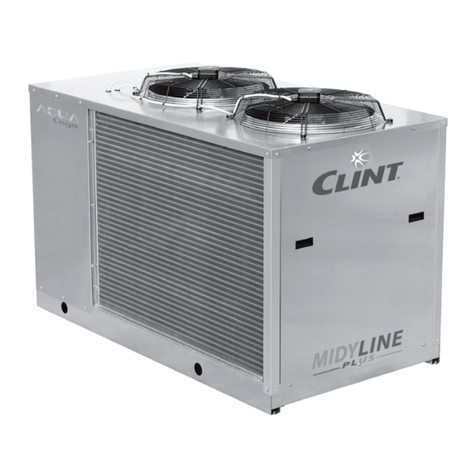
Clint
Clint CHA 91 manual

Aspira
Aspira ASPIRCOMFORT PRO X 460 H Installation, use and maintenance manual
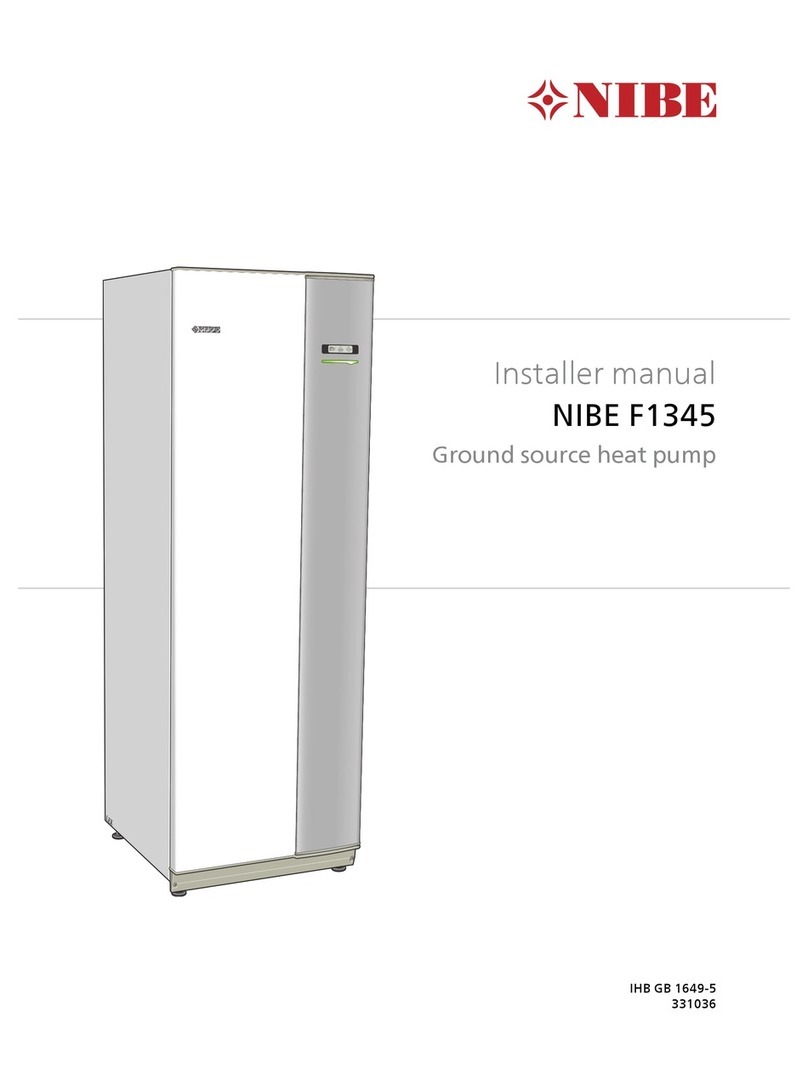
Nibe
Nibe F1345 Series Installer manual
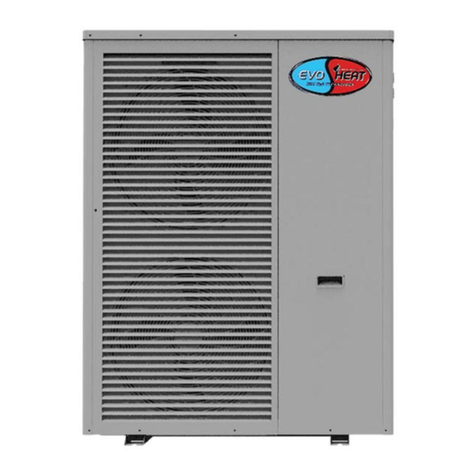
evoheat
evoheat Evo Flex Installation & operation manual
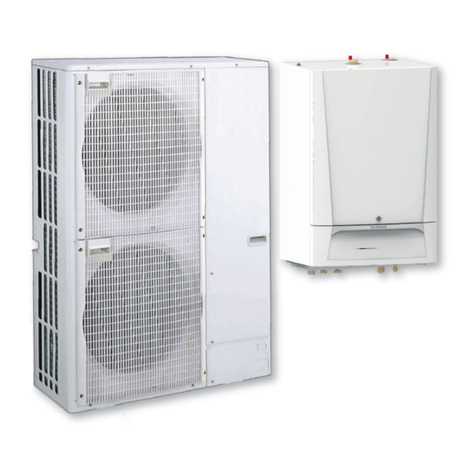
DeDietrich
DeDietrich HPI S Series user guide
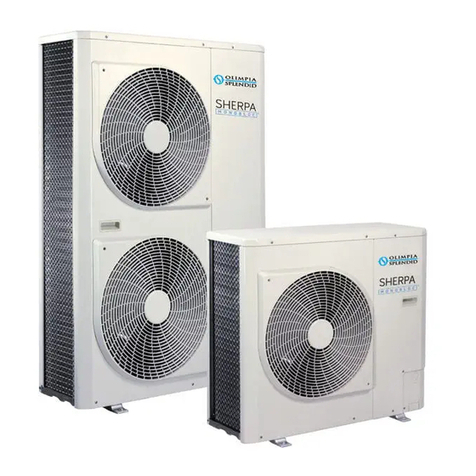
Olimpia splendid
Olimpia splendid Sherpa Monobloc 4 Instructions for installation, use and maintenance
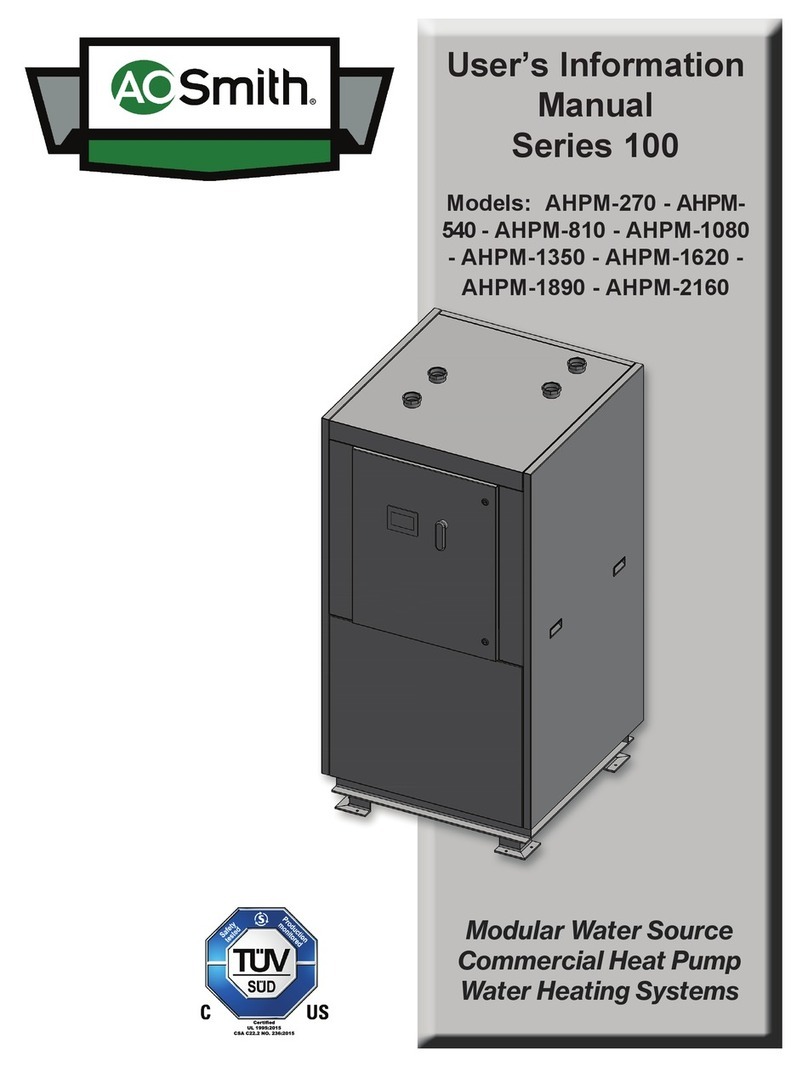
A.O. Smith
A.O. Smith AHPM-270 User's information manual

Daikin
Daikin ERSQ 011AAV1 Service manual

ICP
ICP PHX330000K00A1 installation instructions
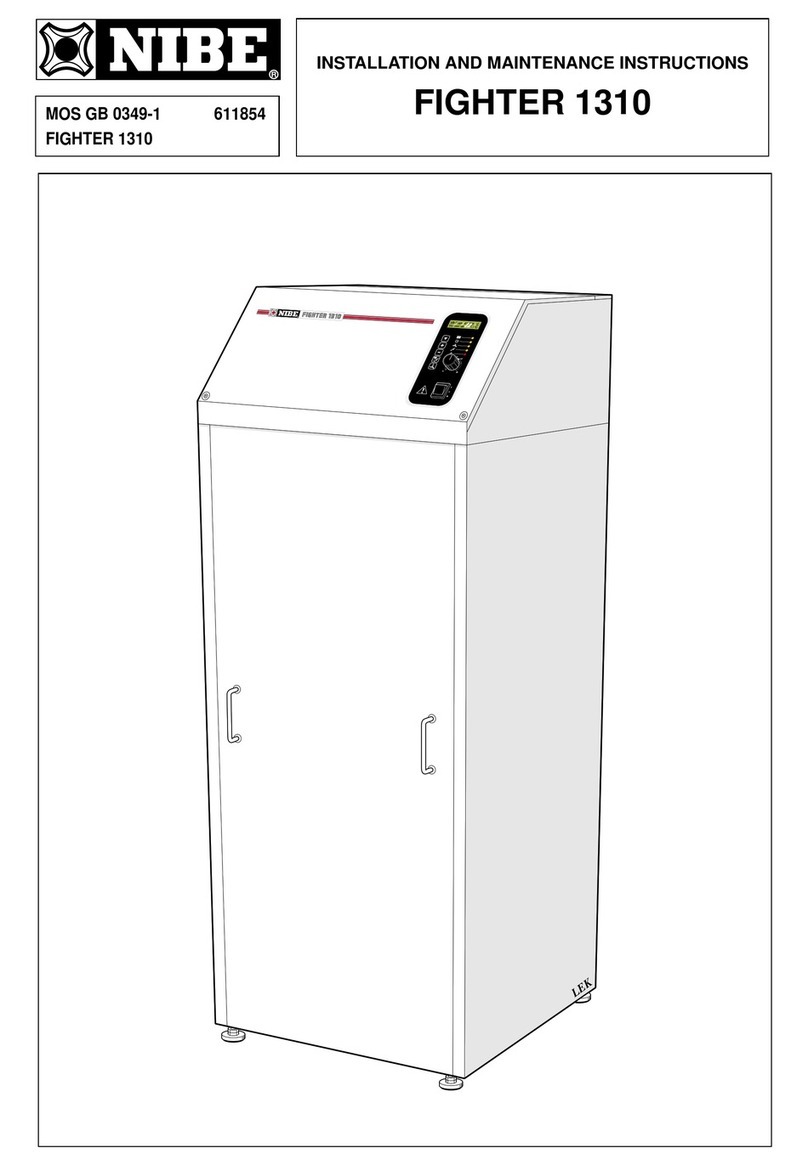
Nibe
Nibe FIGHTER 1310 Installation and maintenance instructions
